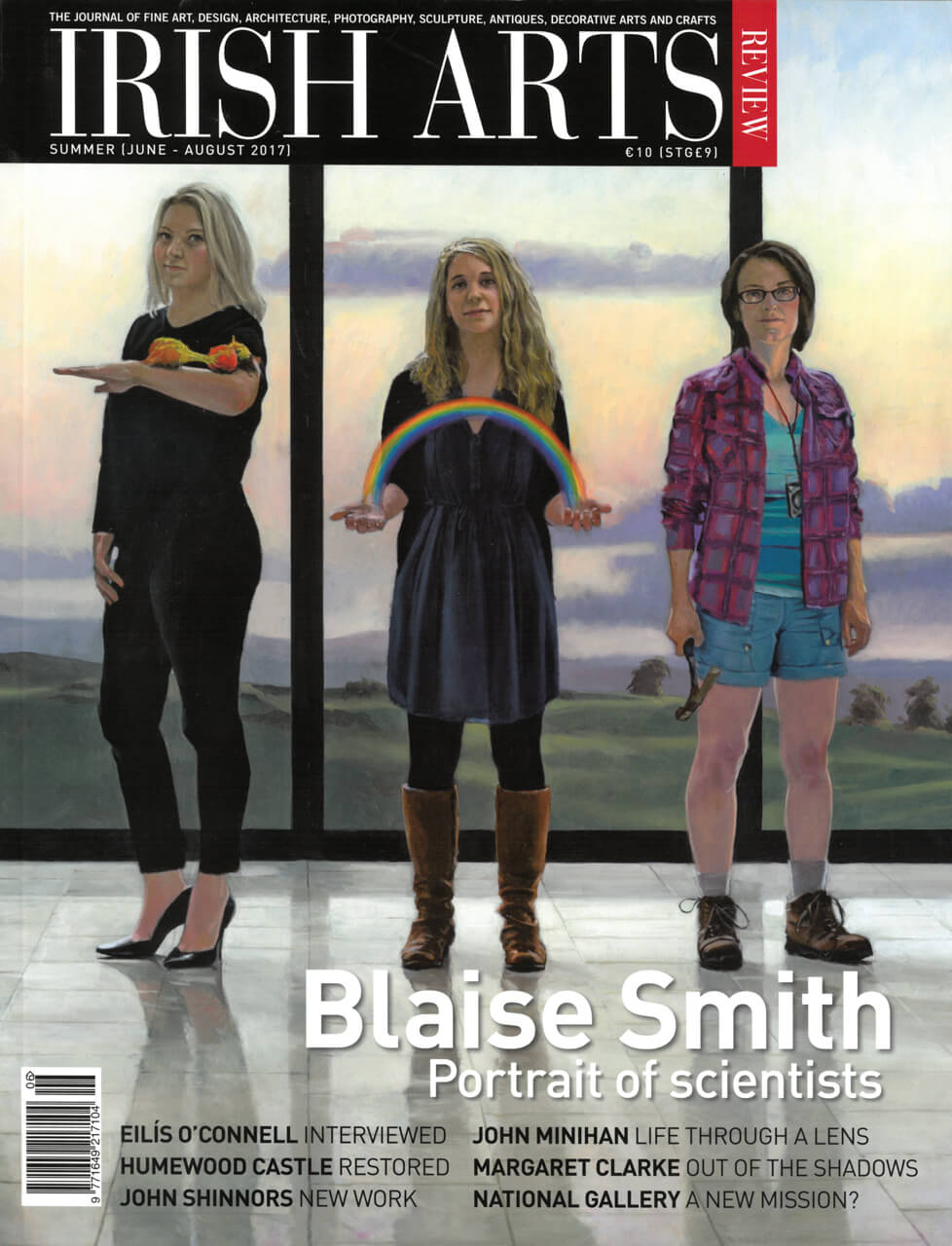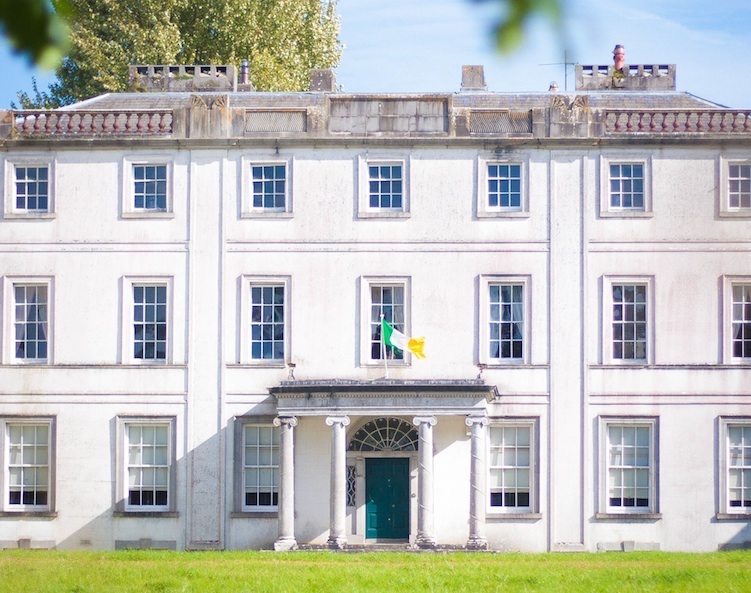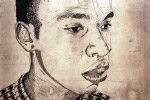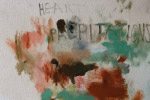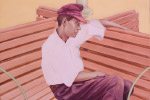
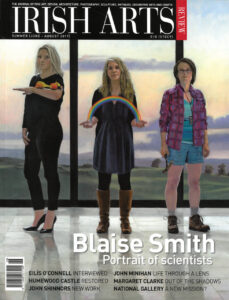
[slider_pro id=”255″]
From the Summer 2017 edition
Non-naturalistic candy colours imbue Shane Berkery’s new collection of paintings on view at Chimera Galley, Mullingar with a surreal edge, writes Susan Campbell
Shane Keisuke Berkery’s workplace at the MART Firestation Gallery and Studios in Rathmines, Dublin, is the first-floor room that once housed the fireman’s pole. All that remains of this past is a small opening in a corner of the floor. But the studio still signals activity; paints are laid out, their smells infuse the air, and canvases of different sizes are stacked around its periphery. Eight of the twelve planned works for Berkery’s solo show at the Chimera Gallery, Mullingar, are among this cornucopia, at various stages of completion.
Born in Tokyo in 1992 to Irish and Japanese parents, Berkery spent his early years in the US and Japan, before moving to Ireland in his mid-teens. Since graduating with First Class Honours from NCAD in 2015, he has received welcome affirmations from a clutch of prestigious awards. The Chimera showing will have ‘no big artist’s statement attached,’ which reinforces a position taken in his final-year thesis. Entitled ‘In favour of the art object’s asignifying regime’, it argued for a direct response to the work of two artists he admires; Wilhelm Sasnal and Magnus Plessen. ‘I’m not rebelling,’ he says with good-natured clarity. ‘Personally, I don’t like looking at paintings and reading them like a text. I think there’s an immediate response to the art object which is more important.’
The exhibition has no overarching theme. It will demarcate where Berkery is at right now in his practice, and he anticipates relationships emerging between the works since they are all informed by his interests. His focus is resolutely on painting, and striving to be as good as he can be. He has a clear aptitude for draughtsmanship, although he admits he finds it difficult, and is working hard to achieve still greater proficiency. He aspires to photo realism, purely as a measure of technical skill, and admires the one-stroke ink paintings made through the Japanese Sumi-e method, since the artists ‘have to commit’.
An exception to the prevailing figuration is a near-complete abstract work that nonetheless retains elements of the figure. It has informed Berkery’s current concern with colour relationships, side-slung drips testifying to his rotation of the canvas in the search for shapes he found it challenging to draw out. He is currently using a restricted palette of Vandyke brown, white, ultramarine, cadmium yellow, and because he favours red with a bias towards pink, permanent rose. From this he achieves distinctive non-naturalistic, candy colours which imbue the works with a surreal, or fictional air. This, and flatness of the paintings’ surfaces, may reflect his former interest in anime, and he is also exploring the aesthetic of Japanese Ukiyo-e prints, with their block colour and graphic approach.
While acknowledging a wide range of influences, which include Pablo Picasso, Salvador Dali and Francis Bacon, Berkery is keen to achieve something original in painting. ‘I want to make images I want to look at,’ he says. Asked if he is succeeding, he ventures, ‘I like aspects of things. I don’t think I’m there yet.’ An important resource in his work are the hundreds of high-quality, black-and-white photographs taken by his Japanese grandparents in the 1950s and 1960s. Berkery was drawn to them because they are informal rather than posed, and the subjects are dressed in ‘cool’ coats, suits and traditional kimonos.
His treatment of these images moves between finely rendered elements and unfinished simplified shapes, achieving balance within the composition. In one work, the face of a young man, wearing a highly detailed sepia mac and faded purple tie, is painted as though in a fog (Fig 3). Berkery is happy with its ‘understated and calm colour combinations’, and says of the subject’s faraway gaze, ‘I enjoy it when the painting leaks out of the frame to make contact with the outside world.’
The human body, clothed or unclothed, is undoubtedly this artist’s core motif, made interesting through his decisions about what to include, what to leave out and what to transform. He aspires to filling the Chimera Gallery with the aura of his subjects, resulting in, ‘a room populated with figures that will hopefully have a real presence.’
The Shane Berkery Show’ Chimera Gallery, Mullingar until 23 June 2017.
Susan Campbell is a 3rd year PhD candidate in the Department of History of Art and Architecture at the University of Dublin, Trinity College. Her research concerns the work of the American artist Richard Tuttle.
